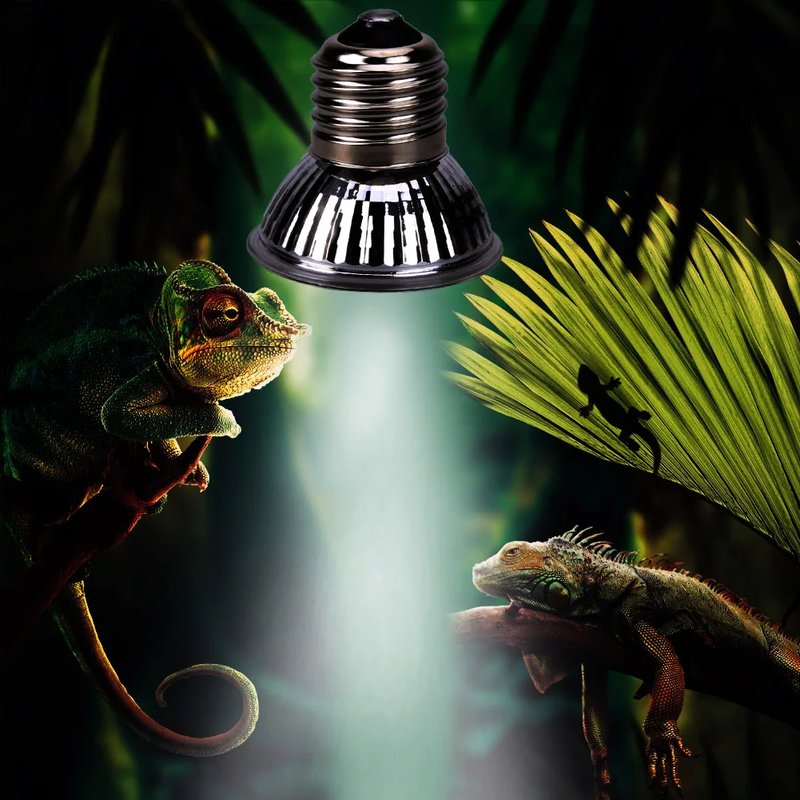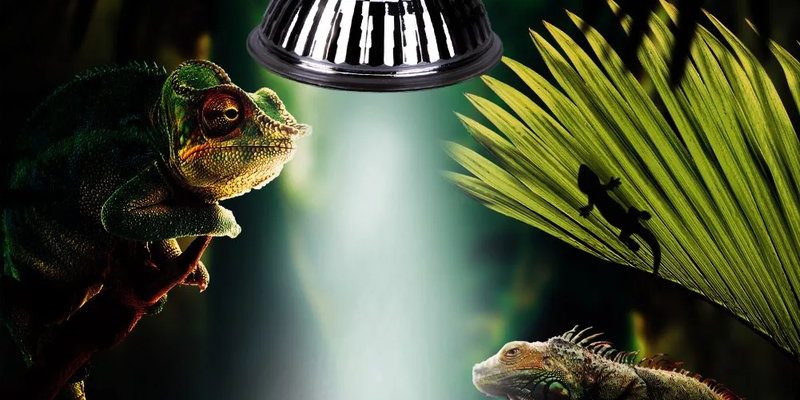
Imagine you’re setting up a cozy corner in your home—the right lighting can make or break that vibe. For chameleons, their entire well-being hangs in the balance of the right lighting setup. It’s essential to understand their unique needs to create a happy, healthy home for these captivating reptiles. In this article, we’ll explore the importance of UVB and heat lamps, their effects on chameleon health, and how to choose the right lighting for your little friend.
Why Do Chameleons Need UVB Light?
You might be surprised to learn that not all reptiles require UVB light, but chameleons absolutely do. Here’s the thing: UVB radiation helps them synthesize Vitamin D3, which is crucial for calcium absorption. Without enough UVB exposure, a chameleon can develop serious health issues like metabolic bone disease.
Imagine trying to grow a garden in the dark—without sunlight, nothing thrives. Similarly, chameleons need that UVB light to support their metabolic functions and overall health. When you set up their habitat, placing a UVB lamp within 12 inches of their basking area can make a world of difference.
Choosing the right UVB lamp is key. You can find options ranging from compact fluorescent bulbs to longer tube lights. T5HO bulbs are often recommended for their effectiveness and longer lifespan. Just like any good coffee maker, you want something that’s reliable and gets the job done!
How Does Heat Affect Chameleons?
Heat is another essential aspect of a chameleon’s environment. Chameleons are ectothermic, which means they rely on external heat sources to regulate their body temperature. Without adequate heating, they can become sluggish and stressed. Think of your chameleon like a car battery; if it’s not charged correctly, it won’t run efficiently.
To give your chameleon a comfortable temperature gradient in their habitat, you should provide a basking spot where temperatures reach around 85°F to 100°F (29°C to 38°C). The cooler areas of the enclosure should sit between 70°F and 80°F (21°C to 27°C). This gradient allows your chameleon to choose where they feel most comfortable, much like picking a warm or cool spot in a sunlit room.
Electric heat lamps, ceramic heat emitters, or even under-tank heaters are all good options. Just make sure to monitor the temperatures using a reliable thermometer, because nobody wants to find out their buddy is overheating!
Benefits of Combining UVB and Heat Lamps
Now that we’ve covered the individual importance of UVB light and heat, let’s talk about why using both together creates the best environment for your chameleon. Imagine if you could combine the best of both worlds—the warmth of the sun and the nutrients it provides in one neat package.
Using a basking light with UVB capabilities means you’re not just giving your chameleon warmth; you’re also supporting its skin health, appetite, and overall vitality. It’s like serving a nutritious meal alongside a nice glass of lemonade on a hot day.
When you set up both types of lights, try to position them in a way that creates a natural basking area. This way, your chameleon can enjoy the benefits of UVB while also getting the heat it craves. Just remember to replace your bulbs regularly. Over time, the UVB output diminishes, even if the bulb still lights up, so staying on top of this can help you avoid any health issues.
Choosing the Right Lamps for Your Chameleon
When choosing lamps for your chameleon, you’ll want to consider factors like wattage, size, and fixture type. Not all lamps are created equal, and the perfect setup will depend on your chameleon species.
– UVB Bulbs: Look for ones specifically labeled for reptiles, typically between 5.0 and 10.0 UVB output, depending on your chameleon’s needs. Higher output is essential for species that naturally bask in the sun.
– Basking Bulbs: Consider halogen or incandescent bulbs for heat as they provide strong heat output and can create that necessary basking area.
– Accessories: Don’t forget about fixtures and reflectors! These can help maximize the light output, ensuring your chameleon gets the best exposure. A good quality reflector can increase the effectiveness of your lighting setup significantly.
Let’s not forget that some chameleons need more specific light conditions than others. If you’re unsure, doing a little research based on your chameleon’s species is always a good idea.
Maintaining an Ideal Environment
Creating the right lighting for your chameleon is just one part of the equation. Maintenance plays a huge role in ensuring your setup continues to support your pet’s health. You’ll need to keep an eye out for bulb replacements, monitor temperature fluctuations, and check the distance of the lights regularly.
You might also want to consider using timers to maintain consistent light schedules. Chameleons thrive on routine, and having a day and night cycle mimics their natural environment. This can help reduce stress and keep their circadian rhythm in check, much like how we all feel more awake when the sun comes up.
Remember, not only do you need to replace UVB bulbs regularly (usually every 6-12 months), but you also want to adjust the height of your basking lamp as your chameleon grows. Keeping everything at the right distance ensures they’re not getting too much or too little light.
Common Mistakes to Avoid
As a beginner chameleon keeper, it’s easy to make common mistakes with lighting that can affect your pet’s health. Here are a few things to watch out for:
– Using Standard Light Bulbs: Regular bulbs don’t emit UVB light. Always choose bulbs designed for reptiles to synthesize Vitamin D3 effectively.
– Overheating: Be cautious about placing heat lamps too close to your chameleon. Always measure the distance and monitor the temperatures to avoid overheating.
– Neglecting the Gradient: Make sure your chameleon has both hot and cool areas to choose from. A lack of temperature gradient can lead to stress and health issues.
– Forgetting to Replace Bulbs: As mentioned earlier, even if the bulb lights up, its UVB output may have diminished. Regular replacements are crucial for maintaining your chameleon’s health.
By being mindful of these common pitfalls, you can help ensure a long and healthy life for your chameleon.
In summary, chameleons undoubtedly need both UVB and heat lamps to live happy, healthy lives. By providing the right lighting, you’re not just enhancing their habitat; you’re ensuring their overall well-being. Think of it as the foundation of a sturdy house—without a solid base, everything else can crumble.
Take the time to set up a proper lighting system tailored to your chameleon’s needs, and keep an eye on their health as you go. Each little detail, from the type of bulbs to the distance they’re placed at, adds up to create a vibrant life for your little friend. Happy lighting!

